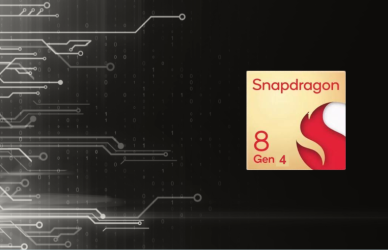Who Invented the Supercomputer? Seymour Cray, Charles Babbage
Who Invented the Supercomputer? – Seymour Cray, Charles Babbage, IBM, or another company? It’s hard to tell whose ideas were most influential. However, there are a few clear-cut answers. We’ll go over Charles Babbage, IBM, and Seymour Cray in this article. In addition to Cray, other famous computer scientists who helped create the supercomputer include:
Seymour Cray
Seymour Cray was born in 1925 and was fascinated by electronics. He spent as much time as possible in the electrical engineering lab in school. After graduating from college, he began working in a communications platoon in the US Army, where he put his natural talents to good use. He also learned to program and worked with various computer technologies. While working in the military, Cray also became interested in developing computers.
After the war, Cray earned an electrical engineering degree and a Master’s in applied mathematics. He then applied for a job at Engineering Research Associates (ERA), one of the first companies to build computers. The company started out as a code-breaking machine for the Navy, but quickly expanded into civilian computers as well. One of Cray’s first projects was designing the ERA 1103 supercomputer. This machine was so large, it weighed over 19 tonnes.
In the 1950s, Cray formed his own company and released the Cray-1, the world’s first supercomputer. Cray sold three models of the supercomputer to government laboratories. Over the years, Cray continued to improve its machines, making major leaps in processing power and innovative system designs. In addition to creating the fastest supercomputers, he also created a powerful supercomputer for commercial use.
During the 1970s, IBM failed to match Cray’s productivity, and he began to use questionable methods to overtake the CDC. The CDC filed an antitrust suit against IBM, and the company Control Data eventually became bureaucratic. Cray moved his project to Colorado Springs, where he set up Cray Research Corporation, which continues to operate today. There are over a dozen different types of supercomputers.
Before Cray invented the supercomputer, he worked on a variety of scientific computing devices. He was also a veteran of World War II. After he had his master’s degree, he worked for several firms, including Engineering Research Associates, which developed the first commercially successful scientific computer. In addition, he also worked on code-breaking technologies for government and industrial clients. He eventually created a computer called the Univac 1103.
When Seymour Cray conceived of the supercomputer, he was an electrical engineer.
He was also working on the ERA1103. After he created the CDC6600, he left SperryRand to work for Control Data Corporation. The company started building supercomputers, including the IBM 7030 “Stretch”. The Cray Computer was the fastest computer in the world and was the first to use transistors.
In 1976, the Cray-1 supercomputer was the fastest computer in the world. It was only one machine that could compete with it. In fact, it was used for highly specialized tasks and was known as the “father of the supercomputer.” Seymour Cray was tragically killed in a car accident two weeks later, a few months after revealing his groundbreaking machine. It was still possible to get a home computer to match Cray’s achievements.
Charles Babbage
When he died in 1871, it was unclear whether Charles Babbage Invented the Computer or not. The famous inventor was a genius, but he never had the chance to realize his dream of creating the computer. In fact, he failed to build a calculating machine, despite government support. He had to abandon the project when his mental health began to decline. This led him to suffer from a mental breakdown and died at his home in London.
In the mid-1800s, Charles Babbage was working on two mechanical devices: the Difference Engine No.2 and the Analytical Engine. Both were ahead of their time and involved major expenses. Babbage also inspired other engineers and scientists to work on the same project, including German computer scientist, Konrad Zuse. Although Zuse was more successful, he was still considered the father of modern computers.
During his early career, Babbage worked as a mathematician at Cambridge. His studies led to several publications and he was elected to the Royal Society. While at Cambridge, he was also active in the Astronomical Society, where he played a major role. As he worked in the Astronomical Society, Babbage began to develop an interest in calculating machinery. He continued to work on this topic throughout the rest of his life.
Babbage’s education shaped his future career. He attended a private academy and had tutors. After graduating from there, he worked on various designs of calculating machines created by mathematicians and inventors. He even co-founded the Analytical Society, a group of mathematicians that promoted continental mathematics. Despite his shaky start in life, Babbage was able to make significant progress in the field.
The Difference Engine was a room-sized machine. Babbage’s work was critical to the development of modern computers. Although it was not finished, his experiments and designs showed that calculations could be mechanized. As a result, he was awarded the first gold medal from the Royal Astronomical Society. Other notable achievements include serving as a math professor at Cambridge and developing railroad rail gauges. He also ran for Parliament and invented the cowcatcher.
While most machines developed during the 18th century were developed for military purposes, Babbage’s never-built mechanical engine was designed for more complex chores. In fact, the machines were originally designed to chew through intricate chores and calculate artillery firing tables. As World War II began, it took thousands of the world’s brightest scientific minds. The German army, meanwhile, didn’t see a need for a modern supercomputer and declined Konrad Zuse’s offer.
Despite the difficulties in developing a modern supercomputer, Charles Babbage remained an inspiration for its development. Although he wasn’t a fan of the name, the Englishman was regarded by many as the father of the computer. While his machines were not yet fully-fledged computers, they did feature an input and output mechanism, a processor, and a printing mechanism.
IBM
The Watson supercomputer from IBM made history in the 1980s when it beat Ken Jennings on “Jeopardy!” Though IBM’s Watson was hailed as a technological revolution, it failed to live up to expectations. Designed to predict correct answers to trivia games, Watson was not meant to be an all-purpose machine. In fact, it might even fail to answer a second-grade reading comprehension test.
The first mass-produced computer produced by IBM was the Model 650, a high-performance machine with a magnetic data-storage drum that spins at 12,500 rpm. It was used in universities to teach programming and was a reincarnation of Alan Turing’s Pilot ACE. Later, the company released the Cell Broadband Engine, an improved version of the ACE that was developed for the US National Security Agency.
The Watson supercomputer had a high price tag, but IBM dominated the market for office-calculating machines. The company had the expertise to market its equipment, and it repaired and serviced its own machines. By the 1960s, IBM produced 70 percent of the computers in the world. By the end of the decade, IBM dominated 80 percent of computers made in the U.S. The company also dominated the world’s mainframe computer market.
IBM shifted from manufacturing commodity products to scientific research and computer services. Its supercomputer changed the way we use computers. Today, it is the leading computer manufacturer in the United States. Its headquarters are located in Armonk, New York. It was only after World War II that IBM began to produce electronic data-processing systems. IBM’s chief executive, Ginni Rometty, said the company’s heritage was in tackling grand challenges.
In 1998, IBM needed a supercomputer to maintain the US nuclear arsenal. Using the Intel Paragon supercomputer design, IBM built the ASCI Red supercomputer and delivered it to Sandia National Laboratories. For years, the ASCI Red was the fastest supercomputer in the world, and it reached a peak performance of 1.3 teraflops which is equal to one trillion calculations per second.
Several decades later, IBM’s Watson supercomputers are still used in the field of medicine, such as cancer research. However, in 2017, IBM discontinued the Watson for Genomics project developed with the University of North Carolina. In 2016, IBM partnered with the Memorial Sloan Kettering Cancer Center in New York to develop Watson for Oncology. The Taihu supercomputer was the fastest supercomputer in the world from June 2016 to January 2018. It is also used for life sciences research, advanced manufacturing, and data analytics.
In the late 1980s, the Intel 4004 was advertised in Electronic News. This computer had 2250 transistors and could perform 90,000 operations per second. The architecture design team was headed by Ted Hoff, and Federico Faggin. The computer had a power level that rivaled the largest mainframes. It was a major technological milestone in the history of computing. Today, it is the most powerful computer in the world.


